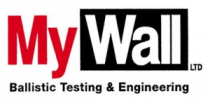NCCN issues first pediatric acute lymphoblastic leukemia guidelines, including use of Voraxaze®
PHILADELPHIA, July 11, 2019 /PRNewswire/ -- BTG plc (LSE: BTG), the global healthcare company, today highlighted the first publication of National Comprehensive Cancer Network (NCCN) pediatric acute lymphoblastic leukemia (ALL) guidelines including consideration of Voraxaze(®) (glucarpidase).
This is in addition to updated NCCN guidelines for central nervous system (CNS) cancer, which now reference new consensus guidelines for Voraxaze(®). Inclusion of Voraxaze(®) is based on publication of consensus guidelines for use of Voraxaze(®) in patients with high-dose methotrexate-induced acute kidney injury and delayed methotrexate clearance in The Oncologist(i).
High-dose methotrexate, defined as a dose higher than 500 mg/m(2), is used to treat a range of adult and childhood cancers, including, osteosarcoma, acute lymphoblastic leukemia, and primary central nervous system lymphoma. Acute kidney injury due to high-dose methotrexate is a serious, life-threatening toxicity that can occur in pediatric and adult patients. Voraxaze(®) is indicated for the treatment of toxic plasma methotrexate concentrations (>1 mol/L) in patients with delayed methotrexate clearance due to impaired renal function.
"NCCN is continuing to ensure the medical community has access to current best practice on how to manage delayed methotrexate elimination due to acute kidney injury," said Suzanne Ward, PharmD, MBA, Senior Director of Medical Strategy for Specialty Pharmaceuticals at BTG. "The published guidelines referred to by NCCN provide very specific plasma methotrexate concentration thresholds as early as 24 hours following the start of methotrexate infusion. This allows clinicians to efficiently identify at-risk patients so treatment occurs quickly, minimizing unnecessary over-exposure to methotrexate and toxicity progression."
About Methotrexate Toxicity:
Methotrexate is a potent anticancer agent used in high doses (>500 mg/m2) to treat osteosarcoma, non-Hodgkin lymphoma, CNS lymphoma, and adult and pediatric acute lymphoblastic leukemia. Because methotrexate is primarily cleared by the kidneys, high doses can induce kidney dysfunction and delayed methotrexate elimination. Exposure to elevated concentrations of methotrexate for minutes to hours may lead to acute renal toxicity and other serious systemic adverse reactions. Early treatment with Voraxaze(®) is associated with significantly lower rates of toxicity and mortality.(ii)
About Voraxaze(®):
Acute kidney injury due to high-dose methotrexate (HDMTX) is a serious, life-threatening toxicity that can occur in pediatric and adult patients. Voraxaze(®) (glucarpidase) is a treatment approved by the Food and Drug Administration for the treatment of toxic plasma methotrexate concentrations (>1 mol/L) in patients with delayed methotrexate clearance due to impaired renal function. In clinical studies, all patients treated with Voraxaze(®) experience rapid reductions in plasma MTX concentrations and 91% of patients achieved sustained reductions for up to 8 days.(ii)
About BTG Pharmaceuticals.
BTG Pharmaceuticals provides antidotes that counteract the potentially life-threatening effects associated with exposure or overexposure to certain toxins. These acute care products are typically used in emergency rooms and intensive care units to treat patients for whom there are limited or no existing treatment options. We are dedicated to delivering quality medicines that make a real difference to patients through the development, manufacture, and commercialization of pharmaceutical products. To learn more about BTG Pharmaceuticals, please visit: btgplc.com/pharmaceuticals.
Indication and Limitations of Use
-- Voraxaze(®) (glucarpidase) is indicated for the treatment of toxic
plasma methotrexate concentrations (>1 mol/L) in patients with delayed
methotrexate clearance due to impaired renal function
-- Voraxaze(®) is not indicated for use in patients who exhibit the
expected clearance of methotrexate (plasma methotrexate concentrations
within 2 standard deviations of the mean methotrexate excretion curve
specific for the dose of methotrexate administered) or those with normal
or mildly impaired renal function because of the potential risk of
subtherapeutic exposure to methotrexate
Important Safety Information
Adverse Reactions
-- In clinical trials, the common related adverse events (occurring in >1%
of patients) were paresthesias, flushing, nausea and/or vomiting,
hypotension, and headache
Warnings and Precautions
Serious Allergic Reactions
-- Serious allergic reactions, including anaphylactic reactions, may occur
Monitoring Methotrexate Concentration/Interference With Assay
-- Methotrexate concentrations within 48 hours following Voraxaze(®)
administration can only be reliably measured by a chromatographic method
due to interference from metabolites. Measurement of methotrexate
concentrations within 48 hours of Voraxaze(®) administration using
immunoassays can overestimate the methotrexate concentration
Continuation and Timing of Leucovorin Rescue
-- Leucovorin should not be administered within 2 hours before or after
Voraxaze(®) dose because leucovorin is a substrate for Voraxaze(®)
-- For the first 48 hours after Voraxaze(®), administer the same
leucovorin dose as given prior to Voraxaze(®). Beyond 48 hours after
Voraxaze(®), administer leucovorin based on the measured methotrexate
concentration
-- Do not discontinue therapy with leucovorin based on the determination of
a single methotrexate concentration below the leucovorin treatment
threshold
-- Therapy with leucovorin should be continued until the methotrexate
concentration has been maintained below the leucovorin treatment
threshold for a minimum of 3 days
-- Continue hydration and alkalinization of the urine as indicated
(i) The Oncologist October 2017theoncologist.2017-0243
(ii )Voraxaze(®) [prescribing information]. BTG International Inc; 2016.
(iii )Widemann BC, Balis FM, Kim A, et al. Glucarpidase, leucovorin, and thymidine for high-dose methotrexate-induced renal dysfunction: clinical and pharmacologic factors affecting outcome. J Clin Oncol. 2010; 28:3979-3986.
(iv )2013 Annual Meeting of the North American Congress of Clinical Toxicology (NACCT), Clinical Toxicology 2013; 51(7):575-724. doi:10.3109/15563650.2013.817658.
View original content:http://www.prnewswire.com/news-releases/nccn-issues-first-pediatric-acute-lymphoblastic-leukemia-guidelines-including-use-of-voraxaze-300883277.html
SOURCE BTG plc



